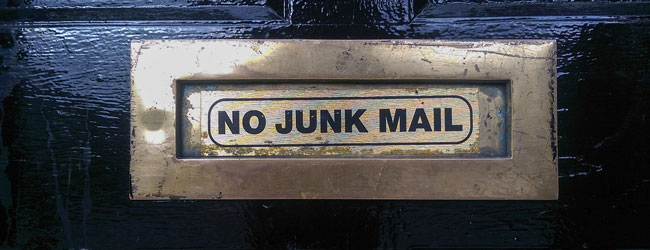
Sending tons of cold emails to influencers isn’t growth hacking, it’s spamming.
Lately I’ve been getting more and more cold, salesy emails cluttering up my inbox each day. These are mostly coming from hard working founding teams who are trying to get traction for their early stage apps. Obviously, there’s nothing wrong with attempting something new, in fact innovation is supposed to be baked right into the original idea of Growth Hacking. But I think that because of the ubiquity of apps out there and the reality of people’s limit for signing up for services, some folks are crossing the line into spammy practices that will only serve to damage their reputation rather than building positive relationships with influencers.
In this article, I want to go over the definition of growth hacking, explain what it’s not, and finally show you how to practice some good growth hacking tactics to boost your online presence.
What is Growth Hacking?

Growth hacking is a means of using technology and innovation to reach your business goals more quickly. Growth hackers are known for first coming up with a “Wouldn’t it be great if…” idea that, if fulfilled, would help their business grow. Then, they employ technological means to turn that dream into a reality.
One of the most famous examples of growth hacking is from AirBnB. That company’s business model allows people to advertise properties that they own so that others can rent them for a few days, weeks, or even longer. AirBnB employed several growth hacks to get the word out about its business, but the best one is the company’s use of Craigslist to advertise rooms for rent.
AirBnB, as most companies in the startup phase, was interested in reaching a broad audience when it first launched. The company wanted to allow property owners to automatically post their listings to Craigslist when they created a listing on the company’s platform. To that end, AirBnB engineers created software that would handle the process of creating and publishing the post without requiring the user to lift a finger. When that software was finished, the new feature helped propel AirBnB to “household name” status.
Pay particular attention to what the AirBnB growth hackers did there. They said: “Wouldn’t it be great if we could reach the Craigslist audience?” Then, they used technology to post messages that people on Craigslist would see. It’s a classic example of growth hacking.
What Growth Hacking is Not

The well-known story of growth hacking that’s brought to us from AirBnB is not without some level of controversy. After all, the company used a bot to post to Craigslist without the permission of Craigslist. However, even though it was automated there was nothing dishonest about it.
Some self-described growth hackers, on the other hand, are known to cross the line from clever ingenuity into unethical practices. Instead of being “wise as serpents and harmless as doves,” they opt for easy shortcuts that could end up hurting their business model.
- For some good ideas, see our article on lean start up SEO.
Email Spam

As an example, some companies buy email lists and send spam. The principles of those companies are apparently under the impression that “more is merrier” when it comes to email lists and that people will willingly open their emails from unknown sources and respond to whatever call to action is embedded in them. However, it’s more likely that those emails will simply end up in the trash. Also, the company hurts its reputation by employing spam as a marketing technique. Finally, email lists simply aren’t worth the money that people pay for them.
Spammy Backlinks

Other growth hackers sometimes opt for spammed backlinks. The reason they do that is because they’re trying to manipulate the search engines into ranking their website highly for a specific keyword or set of keywords. They know that one of the ways that Google determines where to rank a page for a keyword is based on the quality of the pages that link back to it. Instead of opting for a “white hat” method of guest posting to a popular blog, they’ll instead opt for the easy way out and buy software that spams their backlinks all over other sites that allow comments, article submissions, bookmarks, etc. They think they can fool Google that way.
Google isn’t fooled. It’s often the case that spammy backlinks can be detected by the search engine giant and the site will be penalized accordingly. Anyone who has been through the process of trying to resolve a Google penalty will tell you it’s not worth it.
Rather than trying to game the system you should be coming up with a keyword strategy which works with Google rather than against it.
Bought Reviews

Still other growth hackers go for the option to buy reviews for their products or services. It’s not difficult to find people online who are willing to write positive reviews for something that they never purchased. In some cases, those reviews are written with very clever prose and anecdotes that convince even the most dubious shopper that they’re for real. The problem with that, of course, is that the review isn’t for real and is a dishonest attempt at using social proof. Again, if the growth hackers are caught trying these underhanded tactics, they’ll hurt their brand and could end up losing their business.
Fake Social Media Accounts

Another way that growth hackers try to boost their business is with the use of fake social media accounts. There are a number of people who sell “verified” social media accounts online and some growth hackers are tempted to purchase them and use them to promote the company’s website. It’s an expensive effort, and often futile, because the reality is that they need hundreds of accounts, each with hundreds of followers to generate any kind of decent traffic for their business. Also, if their company is caught using sock puppet accounts for promotional purposes, they’re going to take a PR hit.
Excessive Bot Usage

Finally, some growth hackers take the use of bots to an extreme. Continuing with the previously mentioned example, they’ll buy multiple social media accounts and then use bots to follow people who might be interested in their company’s product or service. The hope is that the people followed will follow back and the company can then promote its product or service to those potential customers. It all looks good on paper, however social media companies have put in place certain checks to prevent their platforms from being used as vehicles for spam. Bot users will end up getting the accounts that they paid for banned from those sites and will have wasted a lot of precious startup money.
Good Growth Hacking

There are plenty of examples of good growth hacking, though. Some growth hackers don’t settle for cheap shots and shortcuts when it comes to trying to build and online presence.
For starters, good growth hacking might bend the rules, but it really doesn’t break them. To continue with the AirBnB example above, the growth hackers their never sought permission from Craigslist for their automated posting system. However, we don’t know that Craigslist expressly prohibited the practice, either. In fact, it’s likely that Craigslist actually benefited from the AirBnB technique.
Growth hacking also takes shortcuts that are ethical. There’s nothing wrong with looking for a way to build the greatest mousetrap, but you shouldn’t do it at the expense of someone else’s time or property. Instead, find clever means to employ technology that doesn’t result in hurting your company’s reputation by hijacking the great work done by somebody else.



I think you make some good points in particular relation to spam, that should be followed with most outbound communications. Many list providers provide poor data and a sender can get caught by a spam filter if they try to send to too many bad addresses.
But if we build on your theme of bending but not breaking the rules,there is one exception that I believe you overlooked. A targeted, relevant, beneficial, and honestly presented cold email is not considered spam by either CAN-SPAM or by most recipients.
Lewis, I’ve often heard that last line repeated by folks who send a lot of cold email, but it’s misleading (at best). CAN-SPAM has absolutely nothing to do with your targeting, relevancy, or the quality of your offer. An offer for $1 Teslas is still illegal if it doesn’t follow CAN-SPAM guidelines, and an offer of pure garbage is still legal if it does.